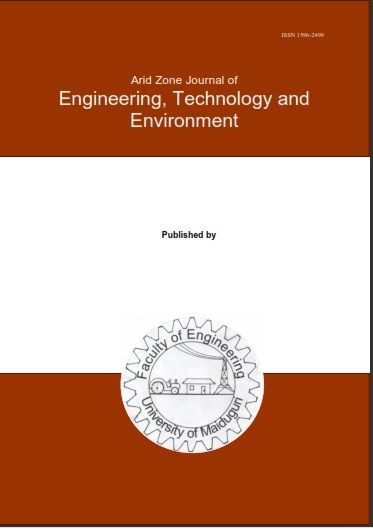Abstract
Globally, renewable resources are widespread which has comparatively little pollution emission effect on the environment. This study was conducted to assess the potential impact of different binders in the production of charcoal briquette using mango leaves, black plum leaves and rice husk as biomass. The organic binder materials used are cow dung, ficus citrofolia (durumi) and okra (butt) while the inorganic binder used was clay. Thus, the mix ratio adopted in the study are 1:1 and 1:2 (biomass:binder). In addition, some of the parameters such as bulk density, moisture content in dry basis, compressive strength, ash content, volatile matter and calorific value were determined to identify the briquettes with highest integrity. The results show that briquettes produced from black plum leaves with clay as binder had the highest density of (1.587g lcm3 and 1.574glcm3) and lowest moisture content of (0.56% and 0.57%) and highest compressive strength of (4.45N/mm2 and 3.90N/mm2) from both mix ratios. Similarly, briquette produced from black plum leaves with okra as binder had the lowest ash content of 2.1% for both mix ratios. However, briquettes produced from black plump leaves with durumi and that of rice husk with durumi as binders yielded highest volatile matter of 36.5% and 37.2% respectively. It is noteworthy that the highest heating values of 33.81mj/kg and 28.43mj/kg was observed in briquettes produced using mango leaves with clay as binder from a mix ratio of 1:1 and 1:2. Furthermore, the lowest heating values of 15.94mj/kg and 16.27mj/kg were observed from briquettes obtain from rice husk with cow dung as binder from both mix ratios. Therefore, it is evident that clay is a better binder for briquette production with significant combustion property, which is cost effective and readily available for both domestic and small-scale commercial purposes.

This work is licensed under a Creative Commons Attribution-NonCommercial-NoDerivatives 4.0 International License.
Copyright (c) 2025 ARID ZONE JOURNAL OF ENGINEERING, TECHNOLOGY AND ENVIRONMENT

